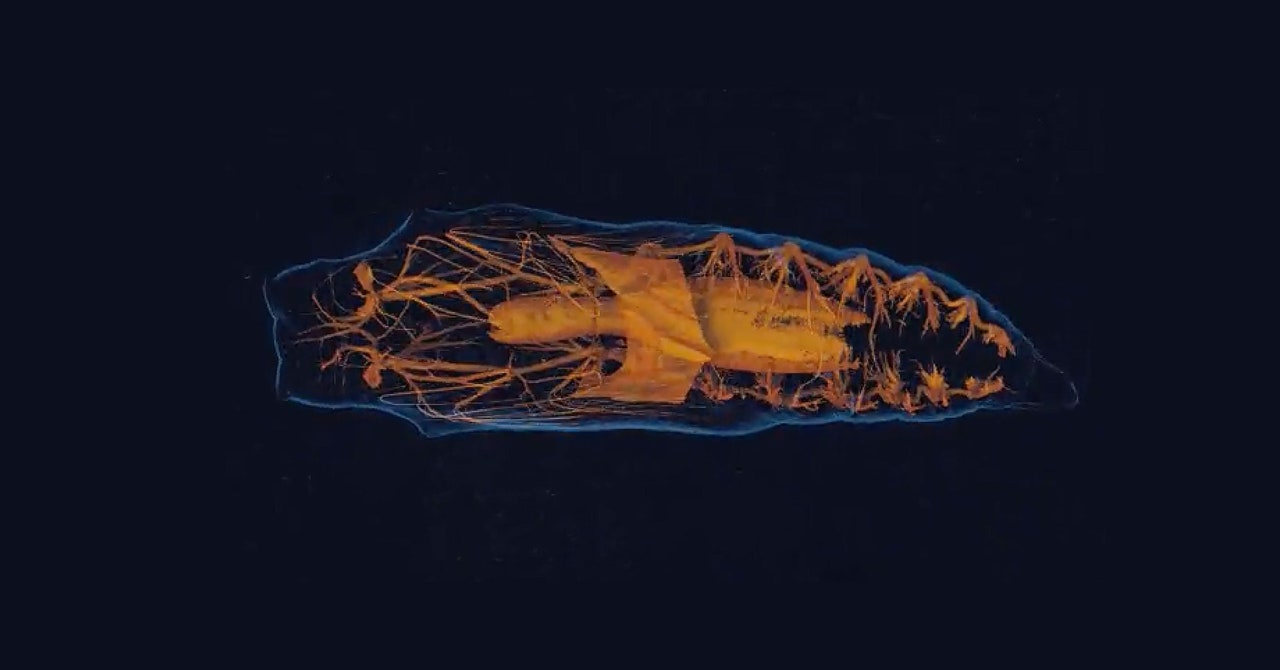
The original version of this story appeared in Quanta Magazine.
On warm summer nights, green lacewings flutter around bright lanterns in backyards and at campsites. The insects, with their veil-like wings, are easily distracted from their natural preoccupation with sipping on flower nectar, avoiding predatory bats, and reproducing. Small clutches of the eggs they lay hang from long stalks on the underside of leaves and sway like fairy lights in the wind.
The dangling ensembles of eggs are beautiful but also practical: They keep the hatching larvae from immediately eating their unhatched siblings. With sickle-like jaws that pierce their prey and suck them dry, lacewing larvae are “vicious,” said James Truman, a professor emeritus of development, cell and molecular biology at the University of Washington. “It’s like ‘Beauty and the Beast’ in one animal.”
This Jekyll-and-Hyde dichotomy is made possible by metamorphosis, the phenomenon best known for transforming caterpillars into butterflies. In its most extreme version, complete metamorphosis, the juvenile and adult forms look and act like totally different species. Metamorphosis is not an exception in the animal kingdom; it’s almost a rule. More than 80 percent of the known animal species today, mainly insects, amphibians and marine invertebrates, undergo some form of metamorphosis or have complex, multistage life cycles.
The process of metamorphosis presents many mysteries, but some of the most deeply puzzling ones center on the nervous system. At the center of this phenomenon is the brain, which must code for not one but multiple different identities. After all, the life of a flying, mate-seeking insect is very different from the life of a hungry caterpillar. For the past half-century, researchers have probed the question of how a network of neurons that encodes one identity—that of a hungry caterpillar or a murderous lacewing larva—shifts to encode an adult identity that encompasses a completely different set of behaviors and needs.
Truman and his team have now learned how much metamorphosis reshuffles parts of the brain. In a recent study published in the journal eLife, they traced dozens of neurons in the brains of fruit flies going through metamorphosis. They found that, unlike the tormented protagonist of Franz Kafka’s short story “The Metamorphosis,” who awakes one day as a monstrous insect, adult insects likely can’t remember much of their larval life. Although many of the larval neurons in the study endured, the part of the insect brain that Truman’s group examined was dramatically rewired. That overhaul of neural connections mirrored a similarly dramatic shift in the behavior of the insects as they changed from crawling, hungry larvae to flying, mate-seeking adults.
Their findings are “the most detailed example to date” of what happens to the brain of an insect undergoing metamorphosis, said Deniz Erezyilmaz, a postdoctoral research scientist at the University of Oxford’s Center for Neural Circuits and Behavior who used to work in Truman’s lab but wasn’t involved in this work. The results may apply to many other species on Earth, she added.

